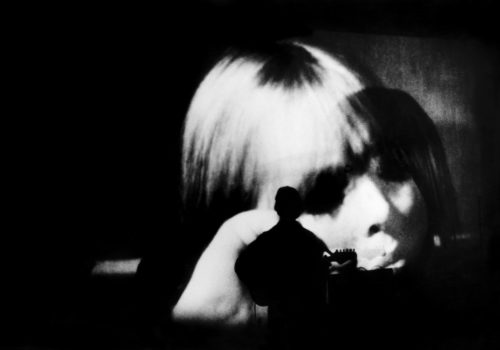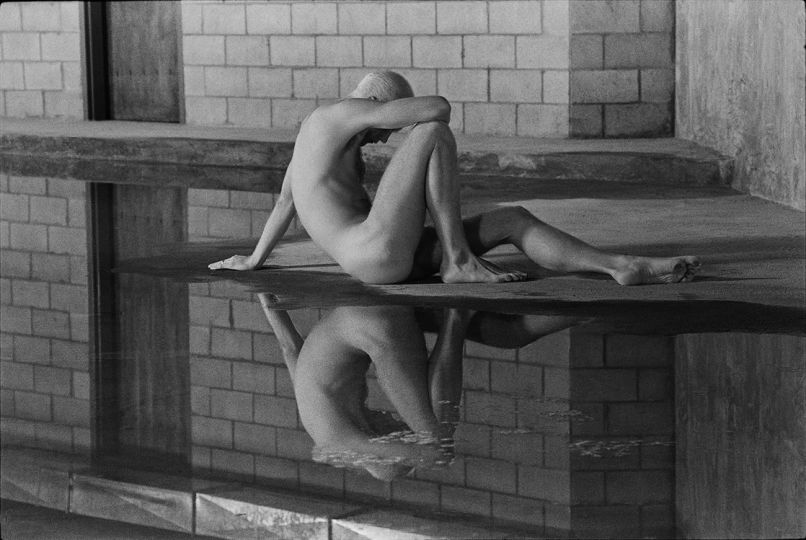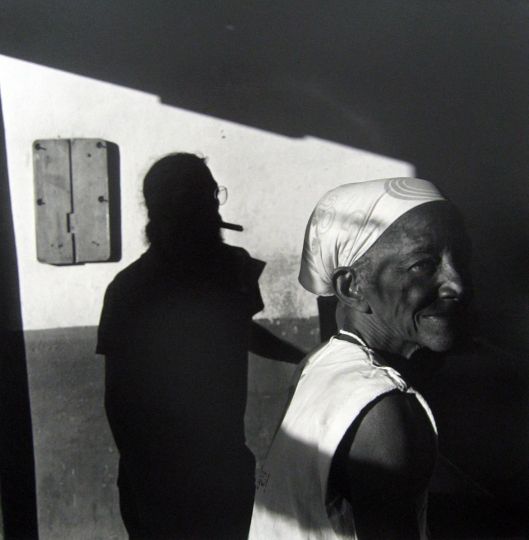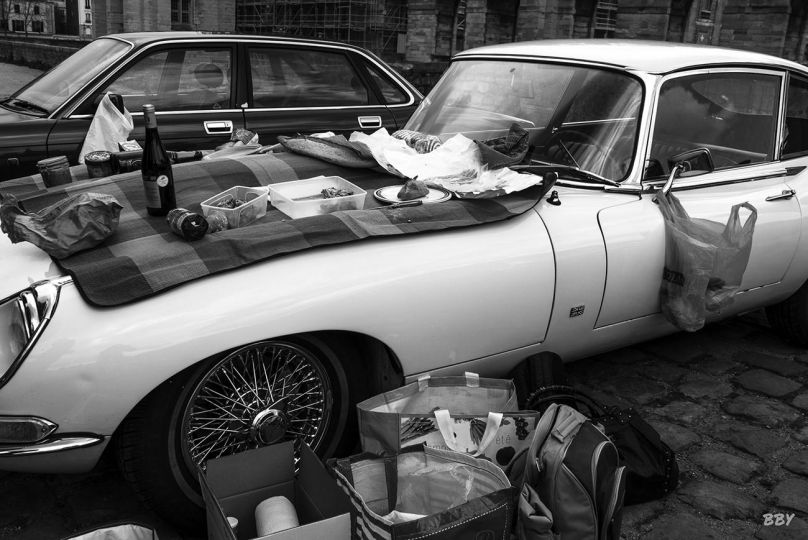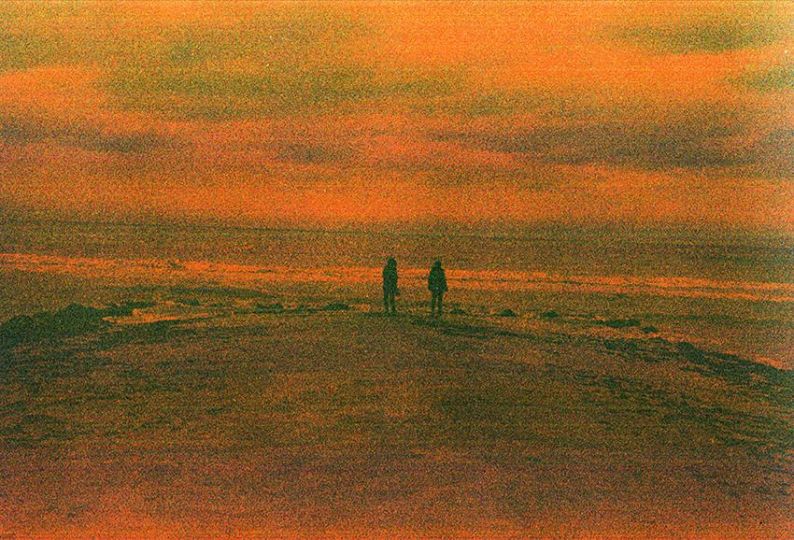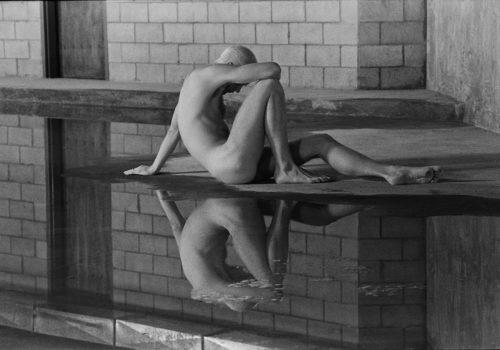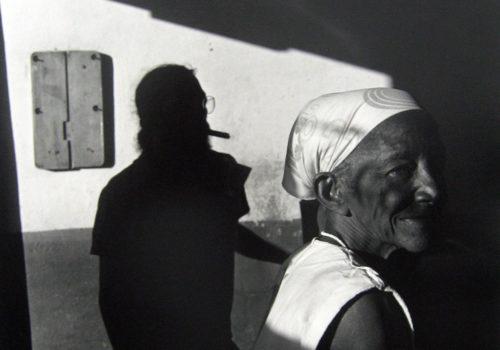A cat like Nat Finkelstein had nine lives before he died in 2009. A photographer, journalist, world traveler, animal smuggler, gun runner, drug dealer, ex-convict, revolutionary, and only God (and Nat) knows what else. Born in 1933 in Coney Island, Finkelstein studied with Alexey Brodovich at Brooklyn College before joining Pix and Black Star agencies before leaving the United States in 1969 to escape the Feds.
Possessed with blessings and curses in equal measure, Nat was drawn to the underground—and the underworld. As his memoirs recollect, “I am an anarchist and believe in the overthrow of Capitalism. I am studied and trained. I know that revolutionary victories are achieved through preparation, organization, stealth, and subterfuge, followed by violence only when victory is assured. I also believe in Lenin’s dictum that the problem with the bourgeois revolutionary is that the bourgeois revolutionary always believes that the STAGE of revolution in which they are participating is The Revolution. This accounts for my antipathy to certain insurrectionists (Hoffman, Ginsberg, et al) of the late 60s and early 70s.”
Never a follower, Nat set his own path, with New York City as his base of operations. His iconoclastic disposition landed him at Andy Warhol’s Factory in 1964 while on assignment from Black Star. With unfettered access to the creation of art, film, and Superstars, his documentation of the earliest years of the Factory reveal a scene that has influenced New York’s downtown identity ever since. The glamour of Hollywood with the grittiness of New York conspired to create Pop Art as a way of life.
In his superb book, Andy Warhol: The Factory Years, 1964-1967, Nat recalled, “Andy Warhol’s greatest work of art was Andy Warhol. Other artists first make their art and then celebrity comes from it. Andy reversed this. For me the Factory was a place of sex and drugs and rock ‘n’ roll, for some of the others it was: from ferment comes art.
“Andy’s strategy was organized like an air-raid though radar-protected territory. He would drop these showers of silver foil out of the plane to deflect the radar. Behind this screen of smoke and mirrors, there was Andy at work. That was the real function of the entourage. It was a way to get the attention away from Andy, while he hid behind them, doing his number. The entourage was there to distract the attention, to titillate and amuse the public, while Andy was doing his very serious work. Andy was a very hard-working artist, a working man. He hid this very carefully, creating the myth that his products just kinda appeared. I’m probably one of the very few photographers who actually has pictures of Andy with his hands on a paintbrush and the paintbrush touching the painting. He didn’t want to get paint on his hands. So like any great artist, he had an atelier. He manipulated people to do things for him. It was a very studied casual act, ‘Hey, you do it.’ While he was working, he also had others work for him… Well, what else is a Factory? It was a brilliant scam.”
Older than everyone (except Warhol), Nat was a macho from Brooklyn, the straight guy in a sea of Superstars and Pop Art, with a camera, a sharp tongue, and no time for most men. He called the Velvet Underground, “The Psychopath’s Rolling Stones.” Lou Reed’s response? “The three worst people in the world are Nat Finkelstein and two speed dealers.”
At a time when drugs became part of America’s identity, Nat knew the score, always able to access the counterculture’s inner core. In his memoirs, he recounts, “The C.I.A utilized psychomemetics in the MK-ULTRA Project, a secret experiment in mind control, AKA ‘Brain Washing,’ often on unwitting subjects, several of whom would kill themselves. Time-Life publicized and popularized LSD in a stream of articles and pretty (although bogus) pictures. And then, in 1964, the mainstream media appointed an academic mercenary, ex-West Point, ex-Harvard Professor Timothy Leary as their ‘New World’ poster child. Leary—sponsored, financed and supported by a group of old wealth American industrialists—peddled ‘The Psychedelic Experience’ from a 4,000-acre estate in Millbrook, New York. Buttressed by the intellectual cachet of Aldous Huxley, plus the financial backing of the Mellon family and the CIA, Timothy Leary founded an organization called IFIF (International Foundation for Internal Freedom) and recruited a coterie of academics with a mystical bent, who forgot that after Brave New World came 1984.”
Nat was invited to Millbrook, and the meeting with Leary was less than successful. For even a drug dealer as successful as Finkelstein was leery of the relationship between the government, the media, the figureheads that brought LSD and amphetamines into American popular culture. He eventually retreated to his home in upset New York, where journalist Al Aronowitz (who introduced the Beatles to Bob Dylan in 1964) described him as, “Nat Finkelstein, Kokaine King of Woodstock.” Nat reigned supreme for a moment or two, and then, as is the case in the underworld, the cover blew.
In 1969, his lawyer called him to New York and revealed a document from the FBI that stated:
A NOTICE
WE THE PEOPLE OF THE UNITED STATES OF AMERICA
HEREBY EMPOWER YOU TO BRING BACK THE BODY
OF
NATHAN LOUIS FINKELSTEIN
CLASSIFIED ARMED AND DANGEROUS
NONSUICIDAL
In fear for his life, Nat Finkelstein left the United States. He traveled the Silk Route in the 1970s, appearing in the most unlikely places, eventually sentenced to four years in prison in France for possession of hashish. Nat’s memoirs revealed, “While in prison, I petitioned the United States government, the CIA, the FBI, and the Drug Enforcement Administration, under the Freedom of Information Act. Both the FBI and the CIA to this day have refused to release my records. However, the DEA records stated that in 1973, while I was still a fugitive, all charges against me were dismissed upon judicial review by a Judge Hector (Lopez or Gomez), with an extreme castigation of the Federal government for illegal actions against me. However, the government not only did not inform myself, my family, my in-laws, or my attorney that these charges were dropped, but forced me to live the life of a fugitive until 1978. Further, my agencies, my publishers, my family, et cetera, had been informed that if they were to publish any work done by me, prior to this dismissal, that they would be arrested for aiding and abetting a fugitive. My voice had been effectively silenced.”
When Nat returned to America in 1982, a free citizen, he inquired to Black Star agency and Life magazine about the whereabouts of his negatives. He notes in his memoirs, “Previously, Howard Chapnick of Black Star had told my ex-wife Jill that a woman purporting to be my wife, with a supposed letter from me, had come to the agency demanding that all my negatives be turned over to her. The only thing remaining of my work, aside from my Warhol series, were four or five prints which were made during various assignments.”
While many photographs remain lost, other come to light. In 1995, a collection of 170 color transparencies from The Factory was discovered to be misfiled under the wrong name at a London photo agency. Among the images are Warhol eating pizza, John Cale dozing off, Nico reading the paper, Edie Sedwick applying lipstick—the intimate moments Nat shared through the years.
His time at The Factory was but a chapter in one of those rare lives that crisscross the world at length, as photographs continue to emerge from the recesses of the earth. Photographs shot on August 8, 1965 at a civil rights protest in Washington D.C. came forth from the archives of Life magazine in 2004. As Nat recalled in an essay for The Blacklisted Journalist, there were members of, “The DuBois Society, CORE (Congress Of Racial Equality), SNCC (Student Non Violent Coordinating Committee). Fresh from voter registration drives in Mississippi, militants from Newark and Harlem were joining up with kids from Y.A.W.F. (Youth Against War and Fascism). White middle class kids and black militants coming together in an uneasy alliance. Together with the various Pacifist societies, as well as the followers of Martin Luther King, who previously had eschewed the anti war movement, they joined to form an Assembly of Unrepresented People, determined to exercise their constitutionally guaranteed right of free assembly in order to petition their government and declare the war in Vietnam to be a racist war.”
Then things got ugly. As Nat wrote, “The first people to be accosted and intimidated by the police were the Afro-Americans. During the march, an apparently late Nazi threw some of his own paint, and was also roughed up by the police. However, he was not arrested. At this point, the police forces were led and instructed by a non-uniformed, unidentified man, who apparently commanded the police to be rough. In fact, you can see this man in the pictures. Who he was, no one may ever know. As you can see from the photographs, the other photographers stayed at a short distance from this action, whereas I was fully involved, as you can see one picture, to the point of being punched in the stomach by a policeman during the melee, even though I was wearing official press credentials identifying me as a photographer from Life magazine. I did my job recording the information before me; the brutality, the obvious concentration on people of color, the fingernails crunching nerve endings, the faces squeezed, the glee of the oppressors, the courage of the kids.
“As you’ll notice from these photographs, there were no “long-haired freaks?: no Abbie Hoffman, no Jerry Rubin, no Allen Ginsberg. No pot, no gratuitous violence on the part of the protestors. This came later. It is my firm belief this was done by the so-called capitalist “Free Press.” The mainstream media that appointed theatrical clowns such as Abbie Hoffman, Jerry Rubin, Allen Ginsberg, and Timothy Leary, as representative of the antiwar movement. When actually, the antiwar movement consisted of the students and the ordinary American working class.”
Throughout his years on this earth, Nat was a champion for the underdog, defying the corrupt system through his art, words, and actions. His actions—while not always legal—held to another ethic; that integrity means holding firm in a raging storm. A typhoon like Nat Finkelstein may have left this earth, but his legacy is a life that challenged and ran counter to the hypocrisy of the world.
Sara Rosen

